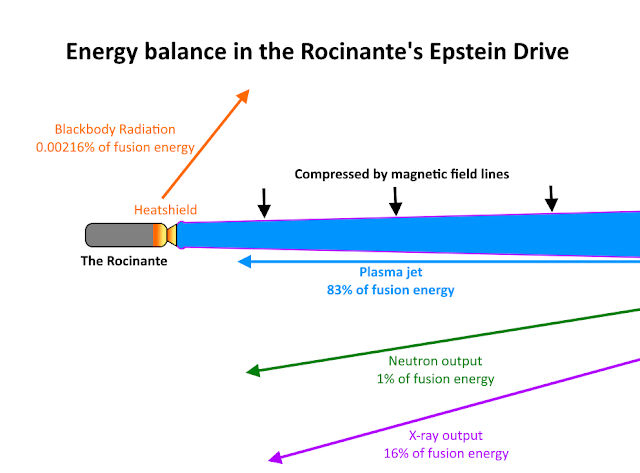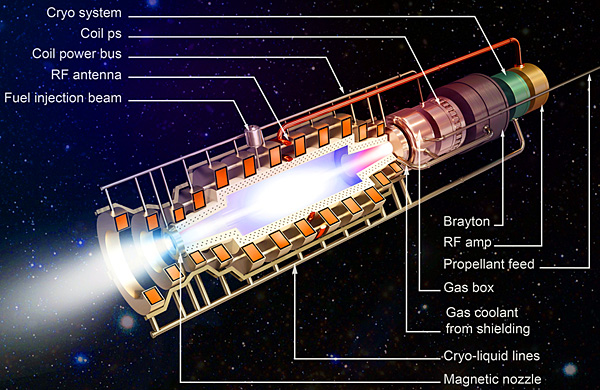February 08, 2020
Extrordanary Claims, Thoughts on The Mechanism of Epstein's Suicide, and Less Extraordinary Analogues
One of the Brickmuppet's Crack Team of Science Babes points out some science links that don't involve pestilence.

Some time ago an interstellar object, subsequently named Omuamua passed through the solar system. On it's way out of The Solar System, it performed what appeared to be a course correction and accelerated out of the solar system. This caused considerable consternation at the time, but subsequent analysis seems to indicate that it was sufficiently flat and non-dense that light pressure combined with the likely sublimation of volatiles on its sun-facing side is sufficient to explain its apparently aberrantly expressed celerity.
That being said, the object is weird and John Michael Godier interviews Dr. Sergey Mashchenko who goes over all the weirdness about this object, known, and unknown as well as some of the speculation that has been put forward to explain the weirdness...the most speculative speculation is that the thing might have been made out of dark matter.
Of course such extraordinary claims require extraordinary proof, and the proof has been accelerating out of the solar system 2 years. It's only a little more likely than the notion that Epstein killed himself.
Which circuitously brings us to another bit of unfounded speculation, regarding The Epstein Drive from THE EXPANSE That plot device is what is called a "torch drive" which is a staple of science fiction without FTL. While considered by the authors to be handwavium, Matter Beam over at the Tough Sci-Fi blog has run the numbers and applied the latest theories of fusion rocket designs to the performance figures noted in the series of books and come to the conclusion that the Epstein Drive, is in fact much harder sci-fi than is generally supposed. It's a very long post, go read the whole thing.

While performance of a Torch drive seems to be within the realm of possibility, it is not a near term prospect. By contrast NASA has been sponsoring research by Princeton Satellite Systems which has produced a design for a direct fusion drive that has astounding performance by current standards.

A dual mode engine, it normally has minuscule thrust but incredible efficiency, however, it has an afterburner mode for high thrust. This is nothing like a torch ship, however according to Winchell Chung over at Atomic Rocket...
Its main development hurdles are the magnetic nozzle, which is still a work in progress with regards to the performance needed for fusing of He3 and its reliance upon that very helium 3 which is quite expensive here on Earth. It can be generated, however by making tritium which decays into He3 and there are, of course the questionable proposals to mine it on the moon.
It may seem to be putting the cart before the horse since we can't get fusion power plants to break even on power, however the power plant has to contain the fusion reaction, whereas a rocket is just has to have it blow out the rear end, and we've had fusion explosions since we evaporated a coral atoll in 1952. In fact the rocket design evolved from the constant containment failures in fusion power plant experiments. It basically involves having the inevitable failure happen in one direction....calling that direction aft and building the ship around that premise. Besides the good overview at Atomic Rocket, numerous peer reviewed papers have been done on this engine and its applications over the last few years including a NASA sponsored design for a Pluto probe and a BIS proposal to use the design for missions to the Oort cloud, the gravitational lensing point and the nearest stars.
Its certainly not off the shelf, but if pursued, it promises remarkable improvements in performance in the fairly near term.
Anyway. the future is looking bright.
So don't eat bats.

"Because in space, no one can hear you sneeze."
Some time ago an interstellar object, subsequently named Omuamua passed through the solar system. On it's way out of The Solar System, it performed what appeared to be a course correction and accelerated out of the solar system. This caused considerable consternation at the time, but subsequent analysis seems to indicate that it was sufficiently flat and non-dense that light pressure combined with the likely sublimation of volatiles on its sun-facing side is sufficient to explain its apparently aberrantly expressed celerity.
That being said, the object is weird and John Michael Godier interviews Dr. Sergey Mashchenko who goes over all the weirdness about this object, known, and unknown as well as some of the speculation that has been put forward to explain the weirdness...the most speculative speculation is that the thing might have been made out of dark matter.
Of course such extraordinary claims require extraordinary proof, and the proof has been accelerating out of the solar system 2 years. It's only a little more likely than the notion that Epstein killed himself.
Which circuitously brings us to another bit of unfounded speculation, regarding The Epstein Drive from THE EXPANSE That plot device is what is called a "torch drive" which is a staple of science fiction without FTL. While considered by the authors to be handwavium, Matter Beam over at the Tough Sci-Fi blog has run the numbers and applied the latest theories of fusion rocket designs to the performance figures noted in the series of books and come to the conclusion that the Epstein Drive, is in fact much harder sci-fi than is generally supposed. It's a very long post, go read the whole thing.

While performance of a Torch drive seems to be within the realm of possibility, it is not a near term prospect. By contrast NASA has been sponsoring research by Princeton Satellite Systems which has produced a design for a direct fusion drive that has astounding performance by current standards.

; text-decoration-style: initial; text-decoration-color: initial; display: inline !important; float: none;">Regardless of the low thrust, it can deliver a metric ton of payload to Pluto in 3.75 years flat, instead of chemical rocket New Horizon's pathetic 30 kilograms taking freaking nine years.
Its main development hurdles are the magnetic nozzle, which is still a work in progress with regards to the performance needed for fusing of He3 and its reliance upon that very helium 3 which is quite expensive here on Earth. It can be generated, however by making tritium which decays into He3 and there are, of course the questionable proposals to mine it on the moon.
It may seem to be putting the cart before the horse since we can't get fusion power plants to break even on power, however the power plant has to contain the fusion reaction, whereas a rocket is just has to have it blow out the rear end, and we've had fusion explosions since we evaporated a coral atoll in 1952. In fact the rocket design evolved from the constant containment failures in fusion power plant experiments. It basically involves having the inevitable failure happen in one direction....calling that direction aft and building the ship around that premise. Besides the good overview at Atomic Rocket, numerous peer reviewed papers have been done on this engine and its applications over the last few years including a NASA sponsored design for a Pluto probe and a BIS proposal to use the design for missions to the Oort cloud, the gravitational lensing point and the nearest stars.
Its certainly not off the shelf, but if pursued, it promises remarkable improvements in performance in the fairly near term.
Anyway. the future is looking bright.
So don't eat bats.
Posted by: The Brickmuppet at
02:05 PM
| Comments (3)
| Add Comment
Post contains 685 words, total size 7 kb.
Posted by: Pixy Misa at Sun Feb 9 09:23:14 2020 (PiXy!)
2
A better analogy for a fusion reactor isn't containing the energy of the *reaction* (which we don't do very much for D-T, even in large high-field designs, due to most of the energy being in the neutrons) - it's in containing the reactants (and heat) long enough for them to burn.
I wish you could just "poke a hole" in a trap and get serious power from a reaction that's still critical. In gasdynamic traps and a whole host of other designs that aren't toroidal, you have holes anyway, and a lot of losses from them. Ions have to bounce around in your device a few hundred thousand times to fusion, without diffusion out of the magnetic field to the point where they can hit a wall due to glancing collisions with other ions. That sort of sets the size of the "hole" you can tolerate, relative to device volume.
I wish you could just "poke a hole" in a trap and get serious power from a reaction that's still critical. In gasdynamic traps and a whole host of other designs that aren't toroidal, you have holes anyway, and a lot of losses from them. Ions have to bounce around in your device a few hundred thousand times to fusion, without diffusion out of the magnetic field to the point where they can hit a wall due to glancing collisions with other ions. That sort of sets the size of the "hole" you can tolerate, relative to device volume.
Posted by: MadRocketSci at Sun Feb 9 11:13:00 2020 (+G8SK)
3
Now that I've read the article, they're proposing blowing up some sort of LIF target in an external field. Okay, different problem.
Still, nothing about fusion is easy. If we're lucky, it's just barely possible to build a reactor the size of a football stadium. I wish we were building fission plants instead of waiting for fusion to get practical.
Still, nothing about fusion is easy. If we're lucky, it's just barely possible to build a reactor the size of a football stadium. I wish we were building fission plants instead of waiting for fusion to get practical.
Posted by: MadRocketSci at Sun Feb 9 11:48:50 2020 (+G8SK)
39kb generated in CPU 0.0852, elapsed 0.6375 seconds.
71 queries taking 0.6255 seconds, 360 records returned.
Powered by Minx 1.1.6c-pink.
71 queries taking 0.6255 seconds, 360 records returned.
Powered by Minx 1.1.6c-pink.









